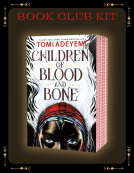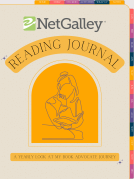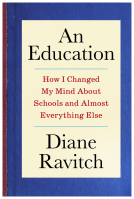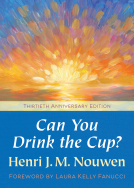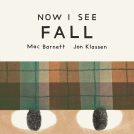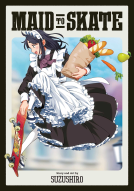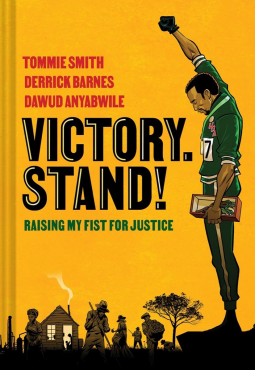
Victory. Stand!
Raising My Fist for Justice
by Tommie Smith, Derrick Barnes, Dawud Anyabwile
This title was previously available on NetGalley and is now archived.
Send NetGalley books directly to your Kindle or Kindle app
1
To read on a Kindle or Kindle app, please add kindle@netgalley.com as an approved email address to receive files in your Amazon account. Click here for step-by-step instructions.
2
Also find your Kindle email address within your Amazon account, and enter it here.
Pub Date 27 Sep 2022 | Archive Date 31 Aug 2022
W. W. Norton & Company | Norton Young Readers
Talking about this book? Use #VictoryStand #NetGalley. More hashtag tips!
Description
A groundbreaking and timely graphic memoir from one of the most iconic figures in American sports—and a tribute to his fight for civil rights.
On October 16, 1968, during the medal ceremony at the Mexico City Olympics, Tommie Smith, the gold medal winner in the 200-meter sprint, and John Carlos, the bronze medal winner, stood on the podium in black socks and raised their black-gloved fists to protest racial injustice inflicted upon African Americans. Both men were forced to leave the Olympics, received death threats, and faced ostracism and continuing economic hardships.
In his first-ever memoir for teens, Tommie Smith looks back on his childhood growing up in rural Texas through to his stellar athletic career, culminating in his historic victory and Olympic podium protest. Cowritten with Newbery Honor and Coretta Scott King Author Honor recipient Derrick Barnes and illustrated with bold and muscular artwork from Emmy Award–winning illustrator Dawud Anyabwile, Victory. Stand! paints a stirring portrait of an iconic moment in Olympic history that still resonates today.
Available Editions
| EDITION | Hardcover |
| ISBN | 9781324003908 |
| PRICE | US$22.95 (USD) |
Average rating from 45 members
Featured Reviews
 Georgia Z, Educator
Georgia Z, Educator
Thank you for the privilege of being able to read the ARC.
This is an important story, written and illustrated in a way that is sure to engage the most reluctant readers. This is a fascinating memoir of an extraordinary sportsman, who grew up to win an Olympic gold and break world records despite facing prejudice, only to be shunned and shamed for making a stand for his rights and beliefs. It will be an excellent way in to conversations around race and prejudice, as well as a timely and relevent tale that shows both how far we've come in some regards, but how far we've still got to go in others ...
Contains racial slurs, so as a teacher recommending, that needs to be considered. Obviously it is from the perspective that shows how bigoted and wrong it is, but important to know as a teaching point/CW. I have a group of Yr8 boys I will definitely be recommending this to when it becomes widely available.
This is a must-purchase for our non-fiction graphic novel section. Understanding Tommie Smith's childhood and college experiences are essential to understanding how Tommie Smith had the courage to raise his fist as the national anthem played when he won a Gold Medal in Track and Field at the 1968 Olympics. Thank You #NetGalley
 Kennedy P, Librarian
Kennedy P, Librarian
This was really great. I recognized the cover art from the famous picture taken at the Olympics, but didn't know anything about the larger story. It should be a primary purchase for public libraries.
This was a remarkable story that gave me new insight into an already powerful moment in American history. The focus on Tommie Smith’s life before the Olympics helped put his decision in context. I also appreciated how the story captures the turmoil within the country, as well, and how the racial injustice embedded in our history and society compelled Tommie Smith and John Carlos to take a stand.
This is a story that needs to be told over and over again for the masses and I am thrilled that it is a graphic novel so it is reachable to more people. History books gloss over “facts” to meet their objective. I lived through some of this history and am ashamed to say I was ignorant of some of the facts. To truly understand, one needs to listen to those who lived it. Our country has come a long way, but we still have a ways to go. Thank you to Tommie Smith for writing your story.
Victory. Stand!: Raising My Fist for Justice is a graphic nonfiction MUST READ for teens to adults. It would be a great required or supplemental reading for high school and college classrooms studying the the Black Power movement. The graphic memoir tells the story of Tommie Smith, a Black Texas native, who risked it all to stand up for his beliefs.
A dedicated athlete and scholar, Smith didn't always know he was destined for greatest and neither did his family. From sharecropper beginnings marred by racial injustice, Smith began to envision the American dream for himself when his athletic talents were noticed by a school track coach. Smith's ability and commitment earned him a scholarship to San Jose State University, where he broke world records in various track events.
At SJSU, Smith learned more about the racial justice movement and became involved. Smith knew he had an opportunity to use his talents, skills, and voice for the advancement of Black rights. Smith fought for change through the Olympic Project for Human Rights. And he won the gold medal in the 1968 Summer Olympics, him and bronze winner John Carlos raised their fists in a gesture of the need for human rights with specific regard for Black rights.
I was given this book as an eARC from the publisher for an honest review.
Like many people, I have seen this iconic image before. However, I do not remember being taught even the athlete’s name let alone his history.
I love learning about world history. It makes the past come alive when you follow one person’s point of view through time. This book was very fascinating, with its remarkable drawings and layout of Tommie Smith’s story. You learn about his family and his roots. By knowing where he came from you discover his determination and drive. The fire inside that helps him work through pain and suffering.
The historical timeline written in the pages was very helpful. It referenced many events that I knew of, but linked them together and described the effects they had or in some cases didn’t have on people around the US. I felt sad for Tommie when he can back from the Olympics in acknowledging by others. It felt validating when he did finally get recognized by many organizations including the U.S. Olympic Hall of Fame.
If you are a fan of John Lewis’ March graphic novel series, then you want to run, not walk to check out Victory. Stand!, the story of Tommie Smith. I just finished reading the arc of this book and I learned so much from this autobiographical graphic novel. It gave me a lot more context for the iconic image of Tommie Smith and John Carlos that I looked up to as a young track runner in high school.
It tells his life story that begins in rural Texas and continues in California. I learned about his life, athletic interests and abilities and his connection to the Civil Rights Movement. Definitely an intriguing autobiography that gives you both the background that led to his stance on the Olympic podium and the aftermath of the repercussions he dealt with as a result of his choice to stand up and make the plight of Black people in the U.S. visible to the world.
This is a stunning graphic novel. I'm a huge fan of learning about history through comics. This format allows readers to more fully process past events and genuinely understand their importance and meaning. I had never heard of Tommie Smith before reading this book. The story follows him from his childhood in Texas as a sharecropper's son to through Olympic victory and beyond.
Smith was a brilliant athlete, excelling in football, basketball, and track. Following an injury in college, he decided to focus all his attention on track. He represented America in the 1968 Olympics and won a gold medal in the 200m meter race. However, the Sixties were a decade full of turmoil on the arduous quest for civil rights, and Smith was punished by the Olympic committee for raising his hand in protest during the national anthem.
Be sure to read this book when it releases on September 27th. I will definitely be adding this one to my classroom library and making sure that my school library has a copy too. I'd love to see this book added to social studies curriculums as well because if we don't learn from the past, then we are doomed to repeat it.
ARC provided by TvS Media Group
If you've read John Lewis' March trilogy, you know that graphic novels can be a great way to introduce tough historical events to young readers. The visuals are especially striking when showing conditions that young readers have never seen; the dirt floors of the Smith's house, the fields in which they worked, and the clothes that they wore are all easily understandable when seen in pictures. This seems like a small thing, but my students have trouble understanding that the world wasn't always the way it is right now. Since the resurgence of Civil Rights issues we've seen in the last few years, it's important for young readers to really understand how severe the mistreatment of Blacks was in the 1960s so that they can see there has been some progress made. Otherwise, it's all too easy to give up hope.
Smith's story is ordinary and remarkable at the same time. Born in 1944, he came from a large family who sharecropped, which meant that even at a young age, he was expected to be in the fields working, and may only have gone to school a few months out of the year. When he was still fairly young, his parents decided to move from Texas to California in hopes of bettering their lives. A truant officers told his parents that the law in California required children to go to school, so Smith was able to hvae this advantage. There was constant, casual racism, and not as many Black students at the schools, but he was still able to not only get an education but to get involved in the sports program. Because he had forward thinking, understanding coaches, he was able to develop into an outstanding all around athlete.
When he went to college, it was a culture shock. The illustration of his wearing overalls to San Jose University might seem laughable to today's readers, but the difference between city life and country life, even forty years ago, was quite striking. Smith knew that the way he was treated when his family was working on farms wasn't right, but when he got to college, he met other Black people who helped him understand this treatment and develop ways to work against it, which lead to his eventual heroic gesture at the 1968 Olympics.
This was a whole generation after Jackie Robinson's entry into sports in the 1940s, but things had not changed much. Black athletes still had to deal with discrimination, but things were changing. The "Freedom Summer" of 1964 changed the attitude of many, and Dr. Martin Luther King's marches showed the world that treatment of Black people needed to change. Smith was aware of all of these events, and worked as hard on his schoolwork as he did on his athletics so that he would have the tools he needed to get ahead in a world determined to hold him back.
Readers may be familiar with the iconic picture of Smith and John Carlos on the winners' stand in 1968, but will be riveted by the story of what lead the men to mount their protest in the way that they did, and also by the ramifications of their actions, and how those affected their lives. I hadn't known that Smith had to deal with death threats, or that he taught at Oberlin College, so there was a lot that I learned from this book.
Barnes' illustrations are perfect for the era; they have a feel of Stan Lee's work, which always stood for equality, and a little bit of a Mad Magazine vibe, which was always on the cutting edge of social commentary in this era. The ARC is in black and white, white seems to fit thematically with the content. The words aren't crowded on the page, as is the case in some graphic nonfiction titles, and Barnes does a great job showing the motion of athletics on the page.
Readers who loved the graphic novel version of Kwame Alexander's The Crossover and Booked will be enticed to pick this book up, and those interested in Black history will be enthralled. Victory. Stand! is a great book to use to introduce history to reluctant readers, who will no doubt find themselves going down quite a rabbit hole to research the characters and events that they find as they read about Smith's life.
This has all the feels of John Lewis's story turned into a graphic memoir with the power of making good trouble as Dr. Tommie Smith did specifically with his iconic fist raised at the Olympics, however what the book does in Barnes's capable writing of Smith's life, Anyabwile's fantastic artwork, and Smith's own life on the page is showcase the fight for rights, visibility, and success for Blacks in America.
Smith grew up in a sharecropping family, moved to California where it was state law to send your children to school. From this schooling and with his natural talent, he excelled in academics and sport for which he became an Olympic athlete.
The black and white graphic novel is stylistically engaging, with its focus on the people not necessarily the circumstances with closeups of faces and an importance on the dialogue. It's a riveting story that leaves out what it needs to to focus on the important message and experiences of Smith.
 Leah C, Reviewer
Leah C, Reviewer
The image of Tommie Smith and John Carlos, raising their fists at the 1968 Summer Olympics, is one that is recognized around the world. However, many of us do not know the story of Tommie Smith's life, nor all of the civil rights work that he contributed to prior to and after the Olympic Games. The graphic novel "Victory. Stand!" is an exceptional work of nonfiction and should be placed beside John Lewis' "March" on school and library bookshelves nationwide.
Readers who liked this book also liked:
We Are Bookish
Sci Fi & Fantasy, Teens & YA
We Are Bookish
Historical Fiction, Mystery & Thrillers, Teens & YA
Tadashi Agi
Comics & Graphic Novels, Cooking, Food & Wine, Entertainment & Pop Culture
Created by Hayao Miyazaki
Comics & Graphic Novels, Sci Fi & Fantasy
Yuki Kamba
Children's Fiction, Comics & Graphic Novels, Sci Fi & Fantasy
Story by Osamu Nishi and Art by Shiro Usazaki
Comics, Graphic Novels, Manga, Sci Fi & Fantasy
Studio Ghibli Library
Arts & Photography, Comics & Graphic Novels
